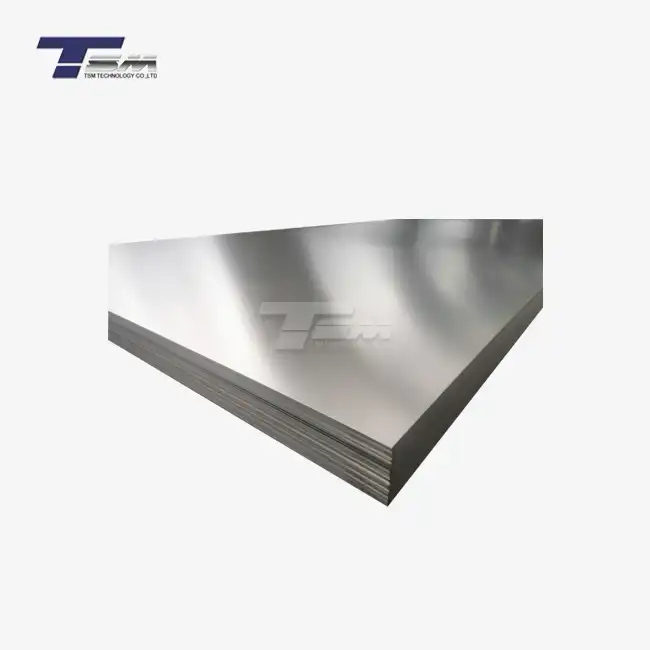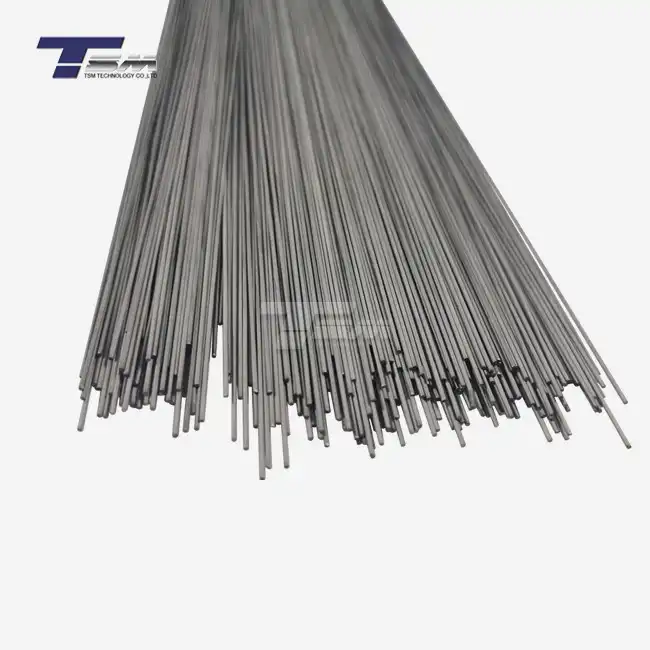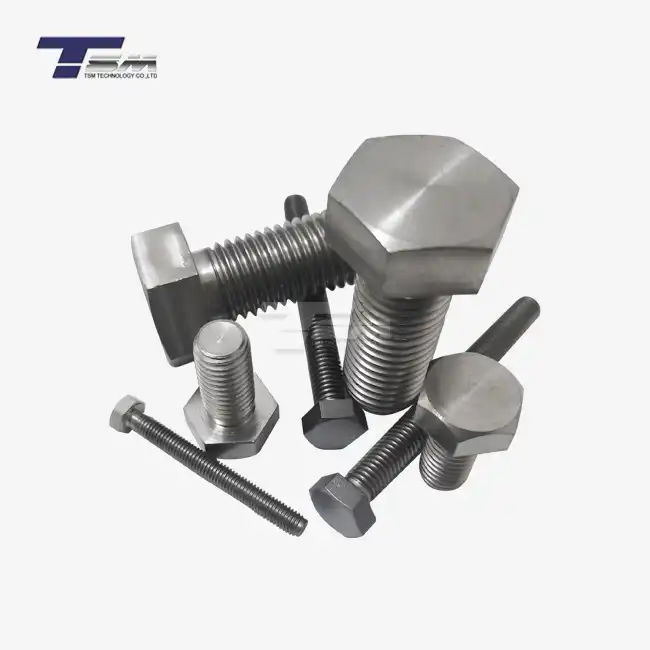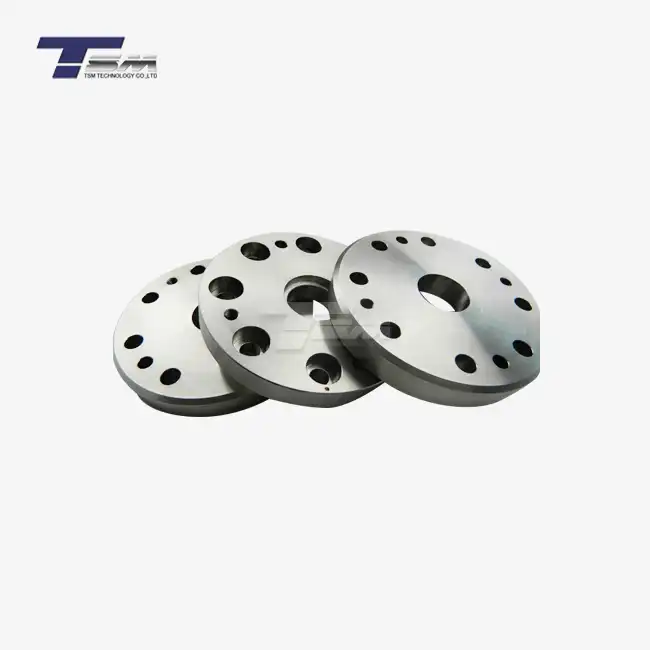Understanding Inconel 600 and Its Applications
Composition and Unique Properties of Inconel 600
Inconel 600, also known as alloy 600, is a nickel-chromium alloy renowned for its exceptional resistance to corrosion and heat. This superalloy comprises approximately 72% nickel, 15-17% chromium, and 6-10% iron, along with trace amounts of other elements. The high nickel content contributes to its remarkable resistance to chloride stress corrosion cracking, while the chromium provides excellent protection against oxidation at elevated temperatures.

Inconel 600 round bars exhibit outstanding mechanical properties, including high tensile strength, good ductility, and excellent creep resistance. These characteristics make alloy 600 bars an ideal choice for applications requiring long-term stability under severe operating conditions. The material's ability to maintain its strength and structural integrity at temperatures up to 1100°C (2012°F) sets it apart from many other alloys.
Industries and Applications Utilizing Inconel 600 Bars
The versatility of Inconel 600 bars has led to their widespread adoption across various industries. In the aerospace sector, these bars are crucial components in jet engine parts, exhaust systems, and high-temperature fasteners. The nuclear industry relies on Inconel 600 for reactor vessels, steam generator tubing, and control rod drive mechanisms, owing to its resistance to radiation and corrosion.
Chemical processing plants utilize Inconel 600 round bars in heat exchangers, reaction vessels, and piping systems exposed to aggressive chemicals. The oil and gas industry benefits from the alloy's resistance to sulfide stress cracking, making it suitable for downhole tools and wellhead components. Additionally, Inconel 600 bars find applications in furnace components, thermocouple sheaths, and heat treatment baskets in the metallurgical industry.
Importance of Manufacturing Processes in Achieving Desired Properties
The manufacturing process plays a pivotal role in determining the final properties of Inconel 600 bars. Both hot forging and hot rolling can produce high-quality alloy 600 round bars, but each method imparts distinct characteristics to the material. The choice between these processes depends on the specific requirements of the end application, including mechanical properties, microstructure, and surface finish.
Hot forging typically results in a more uniform grain structure and improved mechanical properties due to the intense pressure and controlled deformation applied during the process. This can lead to enhanced strength, toughness, and fatigue resistance in the finished Inconel 600 bars. Hot rolling, on the other hand, offers advantages in terms of production efficiency and dimensional accuracy, making it suitable for large-scale manufacturing of standardized products.
Hot Forging Process for Inconel 600 Bars
Principles and Mechanics of Hot Forging
Hot forging is a metal forming process that involves shaping heated metal through the application of compressive forces. For Inconel 600 bars, the process typically begins with heating the alloy to temperatures between 1050°C and 1200°C (1922°F to 2192°F). At these elevated temperatures, the material becomes more malleable, allowing for significant deformation without risking fracture.
The heated Inconel 600 billet is then placed between dies and subjected to intense pressure, often using hydraulic presses or mechanical hammers. This pressure causes the metal to flow and conform to the shape of the dies, resulting in the desired bar geometry. The forging process can be performed in multiple stages, with intermediate reheating if necessary, to achieve the final dimensions and properties of the alloy 600 round bar.
Advantages of Hot Forging for Inconel 600
Hot forging offers several distinct advantages for producing Inconel 600 bars:
- Improved Grain Structure: The intense pressure applied during forging helps to refine the grain structure of the alloy, resulting in a more uniform and finer grain size. This enhanced microstructure contributes to improved mechanical properties, including higher strength and better fatigue resistance.
- Enhanced Mechanical Properties: The forging process can significantly increase the strength, toughness, and ductility of Inconel 600 bars. The directional alignment of grains during forging also leads to improved resistance to creep and stress rupture.
- Reduced Porosity: Hot forging helps to eliminate internal voids and porosity in the material, resulting in a denser and more homogeneous structure. This is particularly beneficial for applications requiring high integrity and resistance to internal defects.
- Customizable Shapes: The forging process allows for the production of complex shapes and geometries, providing greater flexibility in designing Inconel 600 components for specific applications.
Challenges and Considerations in Hot Forging Inconel 600
While hot forging offers numerous benefits, there are several challenges to consider when working with Inconel 600:
- High Forging Temperatures: The high melting point of Inconel 600 necessitates elevated forging temperatures, which can pose challenges in terms of equipment capabilities and energy consumption.
- Rapid Work Hardening: Inconel 600 exhibits rapid work hardening during forging, which can increase the required forging forces and potentially lead to die wear.
- Die Material Selection: The high temperatures and pressures involved in forging Inconel 600 require careful selection of die materials to ensure longevity and maintain dimensional accuracy.
- Post-Forging Heat Treatment: Proper heat treatment is crucial to achieve the desired mechanical properties and relieve residual stresses induced during the forging process.
Hot Rolling Process for Inconel 600 Bars
Fundamentals of Hot Rolling Technology
Hot rolling is a metalworking process that involves passing heated metal between a series of rollers to reduce its thickness and achieve the desired shape. For Inconel 600 bars, the process typically begins with heating ingots or billets to temperatures between 1100°C and 1200°C (2012°F to 2192°F). The heated material is then passed through multiple rolling stands, each progressively reducing the cross-sectional area of the workpiece.
During hot rolling, the Inconel 600 undergoes plastic deformation as it is compressed and elongated between the rollers. This process not only shapes the material but also affects its microstructure and mechanical properties. The rolling operation can be performed in various configurations, including two-high, four-high, and cluster mill arrangements, depending on the desired bar dimensions and production requirements.
Benefits of Hot Rolling for Inconel 600 Production
Hot rolling offers several advantages in the production of Inconel 600 bars:
- High Production Efficiency: Hot rolling is well-suited for large-scale production of Inconel 600 bars, offering higher throughput compared to forging processes.
- Excellent Dimensional Accuracy: The controlled nature of the rolling process allows for tight tolerances and consistent cross-sectional profiles in the finished alloy 600 round bars.
- Improved Surface Finish: Hot rolling can produce Inconel 600 bars with smooth surface finishes, potentially reducing the need for additional machining or finishing operations.
- Cost-Effectiveness: For standardized bar sizes and large production volumes, hot rolling can be more cost-effective than hot forging due to its continuous nature and lower tooling costs.
Limitations and Challenges in Hot Rolling Inconel 600
Despite its advantages, hot rolling Inconel 600 presents certain challenges:
- Anisotropic Properties: The directional nature of the rolling process can lead to anisotropic mechanical properties in the finished bars, which may be undesirable for certain applications.
- Limited Shape Complexity: Hot rolling is primarily suited for producing simple bar shapes and may not be suitable for more complex geometries achievable through forging.
- Potential for Surface Defects: The high temperatures and rolling forces involved can sometimes lead to surface imperfections or scale formation, requiring additional post-processing steps.
- Equipment Wear: The abrasive nature of Inconel 600 at high temperatures can cause accelerated wear on rolling mill components, necessitating frequent maintenance and potential downtime.
Comparative Analysis: Hot Forging vs. Hot Rolling for Inconel 600 Bars
Mechanical Properties and Microstructure
When comparing hot forging and hot rolling for Inconel 600 bars, the impact on mechanical properties and microstructure is a crucial consideration. Hot forging typically results in a more refined and uniform grain structure due to the intense pressure and multi-directional deformation applied during the process. This refined microstructure often translates to superior mechanical properties, including higher strength, improved ductility, and enhanced fatigue resistance in the forged Inconel 600 round bars.
Hot rolled Inconel 600 bars, while still exhibiting good mechanical properties, may have a more directional grain structure aligned with the rolling direction. This can lead to slight anisotropy in mechanical properties, with strength and ductility varying between the longitudinal and transverse directions. However, hot rolling can produce bars with excellent surface finish and dimensional accuracy, which may be advantageous for certain applications.
Production Efficiency and Cost Considerations
In terms of production efficiency, hot rolling generally has an edge over hot forging, especially for large-scale manufacturing of standardized Inconel 600 bar sizes. The continuous nature of the rolling process allows for higher throughput and lower labor costs per unit produced. Additionally, the tooling costs for hot rolling are typically lower than those associated with forging dies, particularly for simple bar shapes.
Hot forging, while potentially more labor-intensive and costly for high-volume production, offers greater flexibility in producing custom shapes and sizes of alloy 600 bars. The ability to create near-net-shape components through forging can also reduce material waste and subsequent machining costs, which may offset the higher initial production costs for certain applications.
Suitability for Different Applications and Industries
The choice between hot forging and hot rolling for Inconel 600 bars often depends on the specific requirements of the end application and industry. Hot forged Inconel 600 bars are typically preferred for critical components in aerospace, nuclear, and high-performance chemical processing applications where maximum strength, fatigue resistance, and uniformity of properties are paramount. The ability to forge to produce complex shapes also makes it suitable for custom components in these industries.
Hot rolled Inconel 600 round bars, on the other hand, are well-suited for applications requiring long lengths of uniform cross-section, such as heat exchanger tubing, piping systems, and structural components in less demanding environments. The cost-effectiveness and dimensional consistency of hot rolled bars make them attractive for large-scale industrial applications where the enhanced properties of forged material may not be necessary.
Conclusion
In the debate of hot forging vs. hot rolling for Inconel 600 bars, both processes have their merits and ideal applications. Hot forging excels in producing high-performance alloy 600 round bars with superior mechanical properties and refined microstructure, making it the preferred choice for critical aerospace and nuclear components. Hot rolling, with its efficiency and cost-effectiveness, is well-suited for the large-scale production of standardized Inconel 600 bars used in less demanding industrial applications. Ultimately, the selection between these manufacturing methods should be based on a careful consideration of the specific requirements of the end application, balancing factors such as mechanical properties, production volume, cost, and dimensional accuracy.
Contact Us
For expert guidance on selecting the optimal manufacturing process for your Inconel 600 bar requirements, contact TSM TECHNOLOGY. Our team of specialists is ready to assist you in choosing the best solution for your unique needs. Reach out to us at info@tsmnialloy.com to discuss your project and explore our range of high-quality Inconel 600 products.



